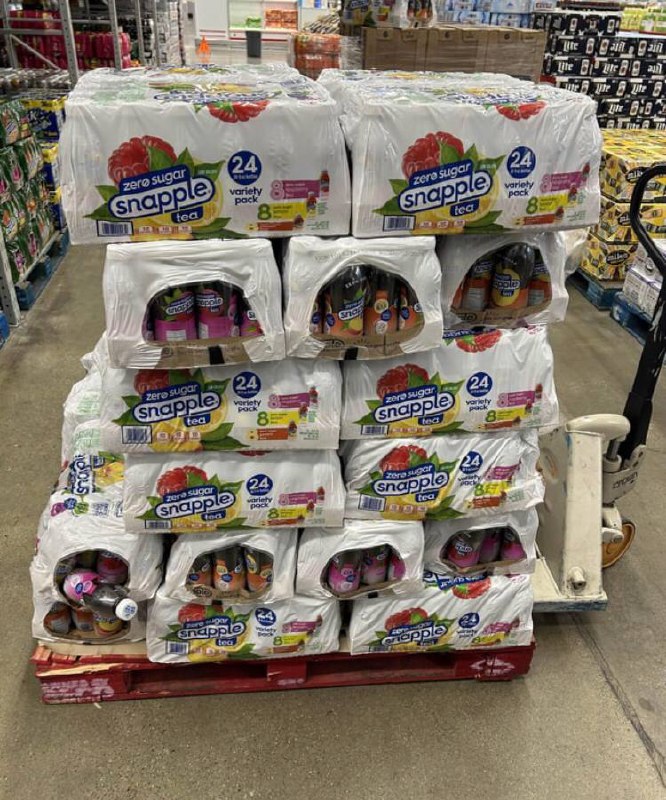Description
Buy Baby Formula Pallets Online: Everything Parents Need to Know
Choosing the best baby formula pallets can be overwhelming for new parents. With a wide range of brands, ingredients, and types available, it’s essential to understand what baby formula is, how it works, and which option is best suited for your baby’s needs.
Whether you’re supplementing breast milk or exclusively formula-feeding, this guide will walk you through everything you need to know about infant formula.
What is Baby Formula?
Baby formula is a manufactured food designed to feed babies under 12 months of age. It serves as an alternative or supplement to breast milk and is formulated to mimic its nutritional profile.
While breast milk is the gold standard, formula provides essential nutrients like proteins, fats, vitamins, and minerals necessary for a baby’s growth and development.
Types of Baby Formula Found In Pallets
There are several types of baby formula pallets available, each designed to meet different dietary needs:
1. Cow’s Milk-Based Formula
The most common type, made from cow’s milk that’s been altered to resemble breast milk. It contains the right balance of nutrients and is usually well-tolerated by most infants.
Best for: Most healthy, full-term babies.
2. Soy-Based Formula
Made with soy protein and free from animal products, this formula is suitable for infants with lactose intolerance or families who prefer a vegetarian or vegan diet.
Best for: Babies with galactosemia or hereditary lactase deficiency.
3. Hydrolyzed Formula
Also known as hypoallergenic formula, it’s broken down into smaller proteins that are easier to digest.Wholesale baby formula pallets online.
Best for: Babies with allergies, colic, or digestive issues.
4. Lactose-Free Formula
Contains no lactose and is suitable for babies who are lactose intolerant or have trouble digesting dairy.
Best for: Infants with lactose sensitivity or gastrointestinal problems.
5. Organic Formula
Made with ingredients from certified organic farms. It often avoids artificial additives, GMOs, and synthetic preservatives.
Best for: Parents who prefer organic feeding options.
Ingredients It Contains: What to Look For
Understanding the ingredients in baby formula can help you make informed choices:
Key Ingredients in Most Baby Formulas:
- Proteins: Whey and casein, often modified to resemble breast milk.
- Carbohydrates: Typically lactose, but sometimes corn syrup solids or other sugars.
- Fats: Include vegetable oils like palm, soy, coconut, or sunflower oil.
- Vitamins and Minerals: Iron, calcium, zinc, vitamin D, and others essential for development.
- DHA & ARA: Fatty acids found in breast milk that support brain and eye development.
Tip: Always read the label to ensure the formula meets FDA and/or European Commission nutritional guidelines.
How to Choose the Right Baby Formula
Every baby is unique, and what works for one may not work for another. Here’s how to choose the right formula for your infant:
1. Consult Your Pediatrician
Always start by asking your doctor for recommendations based on your baby’s health history.
2. Consider Allergies and Sensitivities
If your baby shows signs of food intolerance, such as rash, diarrhea, or excessive crying, consider a hypoallergenic or soy-based formula.
3. Decide Between Powdered, Liquid, or Ready-to-Feed
- Powdered formula is cost-effective and lasts longer.
- Liquid concentrate requires mixing but is easy to store.
- Ready-to-feed is the most convenient but also the most expensive.
4. Check for Added Nutrients
Look for formulas with added DHA, ARA, prebiotics, and probiotics for extra digestive and brain support.
How to Prepare Baby Formula Safely
Safety is crucial when preparing and feeding formula. Follow these steps:
Step-by-Step Formula Preparation:
- Wash your hands and sterilize bottles and nipples before use.
- Use clean water (boiled and cooled, if necessary).
- Follow instructions exactly—use the correct formula-to-water ratio.
- Shake well until the powder is fully dissolved.
- Test the temperature on your wrist before feeding.
Storage Tips:
- Refrigerate prepared formula and use it within 24 hours.
- Do not reuse leftover formula from a feeding bottle.
- Never microwave formula—it can create hot spots and burn your baby’s mouth.
Breast Milk vs Baby Formula
While breast milk provides unique antibodies and is perfectly tailored to a baby’s needs, formula feeding offers flexibility and a practical alternative when breastfeeding isn’t possible or preferred.
Pros of Formula Feeding:
- Convenient for working parents or co-feeding.
- Easier to measure intake.
- Longer shelf life and easier storage.
Common Concerns:
- Lacks natural antibodies found in breast milk.
- Can be expensive over time.
- Some babies may develop constipation or gas.
Conclusion: Both breast milk and baby formula can support healthy development. It’s about what works best for your baby and family.
Common Myths About Baby Formula
There are many misconceptions about formula feeding. Let’s bust a few:
❌ Myth 1: Formula-fed babies aren’t as healthy.
✅ Truth: Modern formulas are nutritionally complete and support normal growth.
❌ Myth 2: Formula leads to obesity.
✅ Truth: Obesity is influenced by many factors including genetics, diet, and lifestyle—not just formula feeding.
❌ Myth 3: All formulas are the same.
✅ Truth: There are significant differences in ingredients, sources, and quality across brands.
Best Baby Formula Brands in 2025
Here are some top-rated formula brands that parents trust:
1.Similac®
Known for non-GMO options and formulas for sensitive stomachs.
2.Enfamil®
- Offers a range of specialized formulas including for premature infants.
3.HiPP Organic®- Popular in Europe, focuses on organic and natural ingredients.
4.Earth’s Best®- USDA-certified organic formula free from antibiotics and hormones.
5.Kendamil®- UK-based formula using whole milk and no palm oil.
- USDA-certified organic formula free from antibiotics and hormones.
- Popular in Europe, focuses on organic and natural ingredients.
Note: Always check availability in your region and consult your pediatrician.
FAQs About Baby Formula
Q1: Can I switch formulas?
A: Yes, but transition gradually unless medically advised. Mix increasing amounts of the new formula with the old one over 5–7 days.
Q2: Baby formula pallets: How much formula does my baby need?
A: Newborns typically need 2–3 ounces every 3–4 hours. As they grow, this increases. Follow your baby’s hunger cues.
Q3: Is powdered formula safe for newborns?
A: Yes, if prepared correctly. However, preemies may require ready-to-feed for sterility.
Q4: Can I make homemade formula?
A: Not recommended. Homemade formulas can lack essential nutrients and pose safety risks.
Buy Baby Formula Pallets : Trust Your Parenting Journey
Feeding your baby is a deeply personal decision. Whether you choose breast milk, baby formula, or a combination of both, what matters most is that your baby is nourished, healthy, and loved. With the right knowledge and support, formula feeding can be a safe, nutritious, and loving way to care for your child.
















